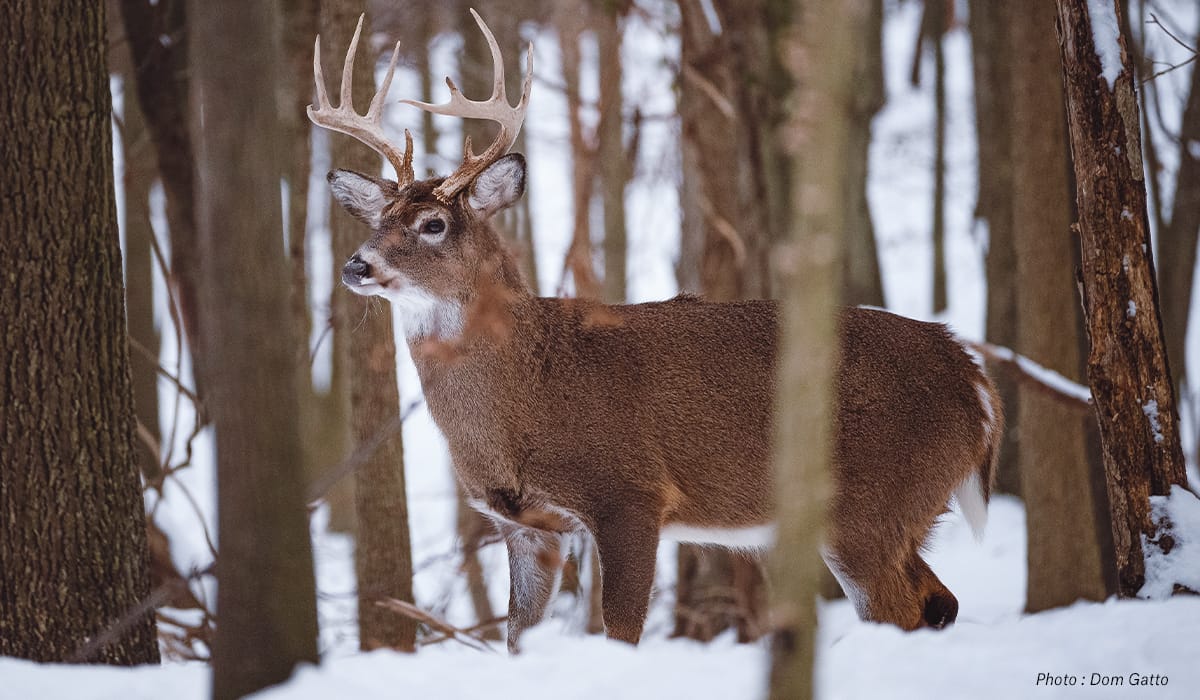When Nina Simone sang, “It’s a new dawn. It’s a new day,” she was feeling good, but not a lot of late-season hunters feel good about the new dawns of post-rut, winter hunting. It’s cold. The deer have been scouted, chased, shot at, and bumped out of their beds and feeding areas for months. Whatever’s been scribbled in your playbook all season seems to have gotten waterlogged along the way and now it’s barren out there. Nothing makes sense.
All that can be turned around though. Hunters can and do have success in the late season, and it’s all about understanding the whitetail’s feeding habits. Let’s unlock the secret to late-season hunting tactics and whitetail behavior in this month’s “Whitetail Report.”
What Changes When Winter Comes?
Noted wildlife author Leonard Lee Rue III was an early student of deer behavior. He wrote many important books on deer and deer hunting. He found that though it’s common for most warm-blooded animals to have increased metabolic rates in response to cold, meaning they need to eat more to stay warm, the opposite is true for whitetail deer. Deer respond to extended periods of cold, harsh weather by dropping their metabolic rate, burning fewer calories and needing less food and relying on their fat stores.
But right as the winter season is changing to have more wintry conditions, deer will feed heavily to fuel their high metabolism. Only after extended exposure to cold weather will they sit for longer.
When deer are trying to survive cold winters they’ll also limit their movement to midday times when it’s as warm as it might get in a 24-hour period. Though after a season of being chased hard, deer needing to eat will become more nocturnal and eat at night.
Clueing in on how the weather begins to change, thus prompting deer to eat more, and observing when you’re in the middle of an extended freeze, when deer will not be eating, will help you crack the code of late-season hunting.

Late-Season Tactics Based on Biological Needs
If the cold snap has just started, or it’s in the immediate forecast, it’s time to find the current food that deer are focused on. They’ll need to feed so setting up close to available food is a good bet. Deer will also begin bedding closer to their food sources as it gets colder, so while the risk is greater of bumping bedded deer getting to a food source, especially if you’re approaching your stand in the afternoon, you still have a chance of catching them between feeding and bedding.
Professor emeritus at the University of Georgia R. Larry Marchinton, who was one of the first researchers to use radiotelemetry to track whitetail deer, has detailed how in very cold weather deer prefer to move during the warmest part of the day (after lunch and into the afternoon). He also discovered that if there has been a heavy snowfall, deer will seek out cover among conifers because it shields them from cold winds and offers some degree of thermal protection. And should conditions become mild, deer may move to south-facing slopes to soak up the sun’s rays.
Morning hunts in extreme cold should all be but abandoned. If you can only hunt in the morning, though, sitting in a stand may prove fruitless. Deer simply aren’t moving. They’ve finished feeding about two hours before sunrise and are bedded. Instead, a slow push through dense vegetation (especially those conifers), or a well-organized “deer drive” with a few hunters, will be your best shot at getting a shot.